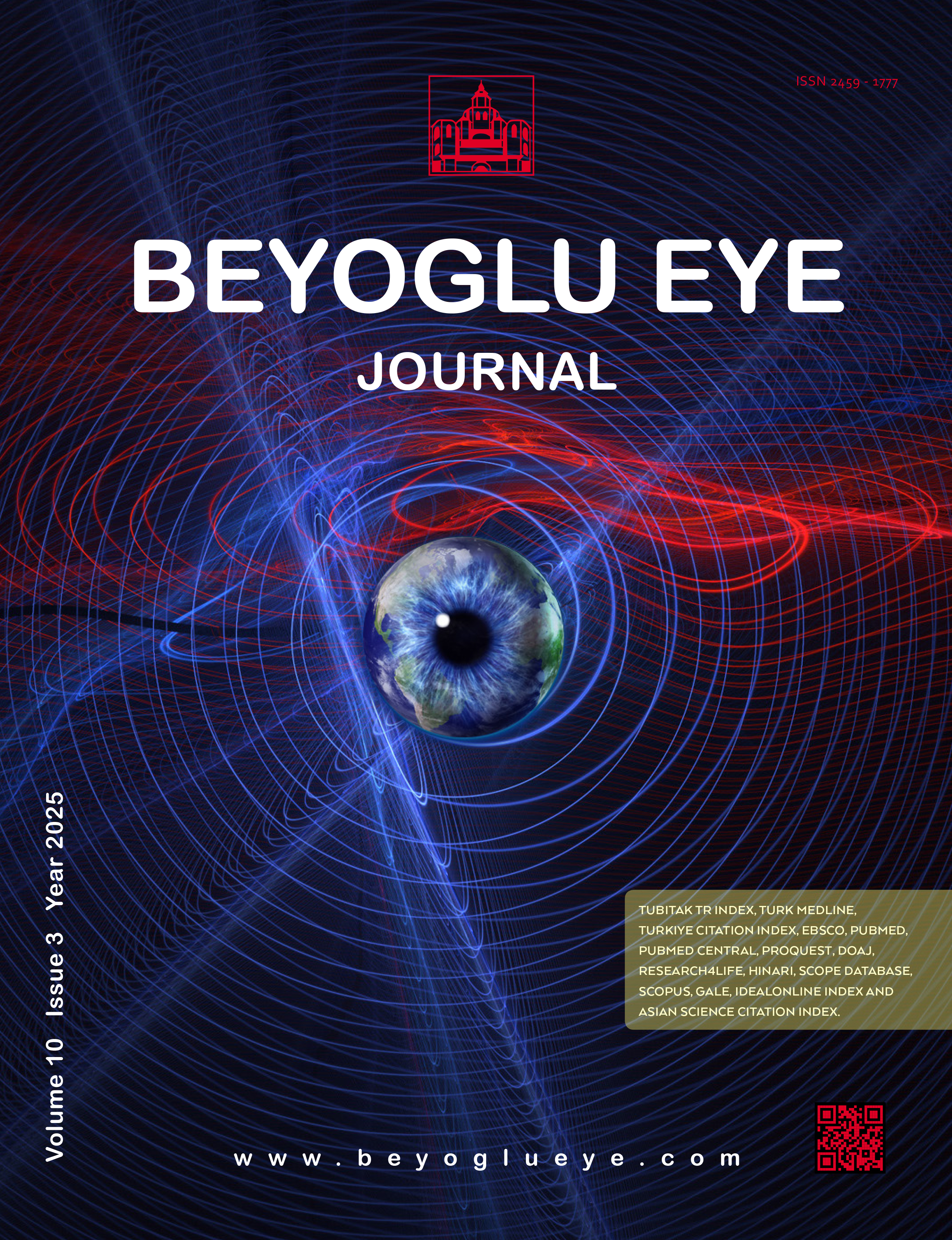
Anxiety Levels Before Intravitreal Injections
Elif Ertan1, Merve Simsek2, Mustafa Dogan31Department of Ophthalmology, Health Sciences University Basaksehir Cam Sakura City Hospital, Istanbul, Türkiye2Department of Ophthalmology, Mugla Training and Research Hospital, Mugla, Türkiye
3Department of Ophthalmology, Afyonkarahisar University of Health Sciences, Afyonkarahisar, Türkiye
OBJECTIVES: In our study, using amsterdam pre-operative anxiety and information scale (APAIS) and visual analog scale anxiety (VASA) analyze the patients anxiety level about intraocular injection therapy and assess possible risk factors for these levels of anxiety in relation to the patients sociodemographic, disease, and treatment characteristics.
METHODS: Three hundred sixty-nine patients who received intravitreal ranibizumab, aflibercept, bevacizumab, and dexamethasone implants were included in the study. To measure the level of anxiety, APAIS questionnaire and VASA were used. APAIS and VASA were evaluated according to age, sex, indication for the injection, injection drug, previous injection numbers, and lens status in the study eye.
RESULTS: About 15.4% of the patients participating in the study had VASA ≥6. The APAIS anxiety component score of 43.9% of the patients was found to be ≥11. Total information requests were found to be ≥5 in 48.7% of the patients. There was a significant negative correlation between VASA, APAIS, and patient age (spearman r=−0.25, p=0.004, r=−0.22, p=0.001). A significant negative correlation was found between the number of previous injections and anxiety levels measured by VASA (spearman r=−0.35, p=0.02), as well as between the number of previous injections and APAIS scores (anxiety levels and total information request) (spearman r=−0.32, p=0.03). There was a no significant difference between VASA, APAIS, and patient sex (p<0.05). A higher level of anxiety measured by VASA and APAIS has been shown in patients who have not had cataract surgery before, compared to those who have undergone cataract surgery (p<0.05).
DISCUSSION AND CONCLUSION: The study underscores the importance of improving patient information and conducting further research to alleviate stress levels.
Manuscript Language: English









